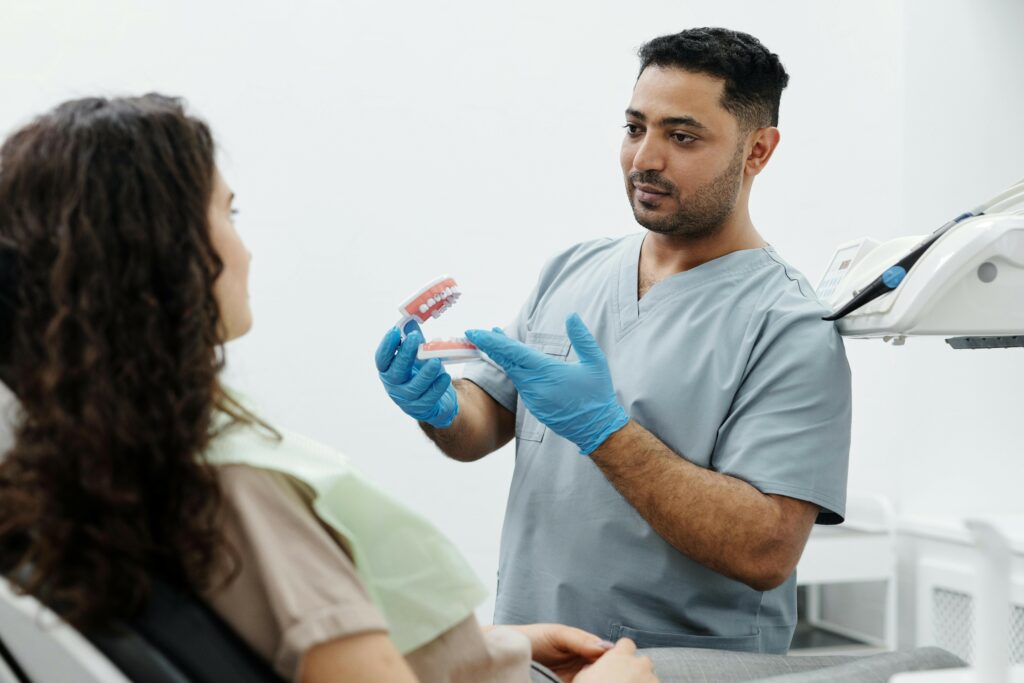The integration of Artificial Intelligence (AI) in healthcare is transforming how various medical fields operate, and orthodontics is no exception. Moshe Tress, a prominent orthodontist, advocates for the adoption of AI technologies to enhance diagnosis, treatment planning, and overall patient care. In this article, Tress shares his insights on how AI is revolutionizing orthodontics and the benefits it offers to both orthodontists and their patients.

1. Use AI to Improve Diagnostic Accuracy
One of the most significant advantages of AI in orthodontics is its ability to analyze vast amounts of data and identify patterns that might be overlooked by the human eye. AI-powered systems can analyze dental records, X-rays, and other diagnostic tools to detect issues such as tooth misalignment, jaw discrepancies, or even early signs of decay.
“AI algorithms can scan and analyze diagnostic data with incredible precision. This helps orthodontists catch issues earlier and develop more effective treatment plans. It’s a valuable tool for increasing diagnostic accuracy and reducing human error,” Tress explains.
By incorporating AI into diagnostics, orthodontists can ensure that no detail is missed and that patients receive the most appropriate and timely care.
2. Optimize Treatment Plans with AI-Driven Predictions
AI’s predictive capabilities allow orthodontists to optimize treatment plans based on a patient’s specific dental anatomy and anticipated tooth movement. AI software can simulate various treatment scenarios, providing valuable insights into the most efficient and effective approaches to achieving the desired results.
“AI can predict how a patient’s teeth will move over time, based on their unique dental structure and treatment goals. This allows us to create more precise and individualized treatment plans, ensuring the best possible outcomes for our patients,” says Tress.
This predictive power not only enhances the accuracy of treatment but can also shorten treatment time by enabling orthodontists to choose the optimal approach from the beginning.
3. Enhance Efficiency with AI-Assisted Aligners
AI technology is playing a crucial role in the customization and production of clear aligners, such as Invisalign. AI algorithms can analyze 3D scans of a patient’s teeth and design a series of aligners that gradually move the teeth into their desired positions. Moshe Tress emphasizes that AI-driven aligner production improves both the speed and accuracy of treatment.
“AI-powered software is used to design aligners that fit perfectly to each patient’s unique dental structure. It ensures more precise movement of teeth, reducing the number of adjustments needed and improving the overall treatment experience,” the experienced orthodontist explains.
With AI-assisted aligners, patients can enjoy faster, more predictable results, and fewer in-office visits, enhancing both efficiency and convenience.
4. Improve Patient Monitoring with AI-Powered Remote Tools
Remote monitoring has become a critical component of orthodontic care, particularly with the rise of telehealth. AI plays a vital role in remote patient monitoring by analyzing photos or scans that patients submit from home. AI-powered software can assess tooth movement and flag potential issues, allowing orthodontists to make necessary adjustments without requiring in-office visits.
“AI-powered apps and tools allow us to monitor our patients’ progress remotely. The software can assess whether the teeth are moving as planned and notify us if any adjustments are needed. This makes treatment more convenient for patients and ensures we’re always on top of their progress,” Tress advises.
Remote monitoring tools powered by AI offer greater flexibility for patients, allowing them to receive high-quality care while minimizing the need for frequent in-person appointments.
5. Enhance Patient Experience Through AI-Driven Engagement
AI can also play a significant role in enhancing the overall patient experience. From virtual consultations to personalized follow-up messages, AI-driven systems can automate many of the interactions between patients and orthodontic practices, creating a more seamless and engaging experience.
“AI technology can help streamline communication between orthodontists and patients. Whether it’s through automated appointment reminders or personalized treatment updates, AI helps keep patients engaged and informed throughout their treatment journey,” says Tress.
By leveraging AI to improve patient engagement, orthodontists can ensure that their patients remain active participants in their care, which ultimately leads to better outcomes and satisfaction.
Conclusion: AI is Shaping the Future of Orthodontics
Moshe Tress firmly believes that AI is reshaping the orthodontic landscape, offering unprecedented benefits in terms of diagnostic accuracy, treatment optimization, patient monitoring, and overall efficiency. By incorporating AI into orthodontic practices, clinicians can provide more personalized, precise, and effective care while improving patient convenience and satisfaction.
Tress encourages orthodontists to stay informed about AI advancements and to integrate these tools into their practices. “AI enhances our capabilities as orthodontists. It allows us to make data-driven decisions, provide more efficient treatments, and offer a better experience for our patients. Embracing AI is key to staying at the forefront of modern orthodontics,” Tress concludes.
As AI continues to evolve, orthodontists who leverage this technology will be better equipped to meet the changing needs and expectations of their patients, delivering high-quality, innovative care that leads to superior results.